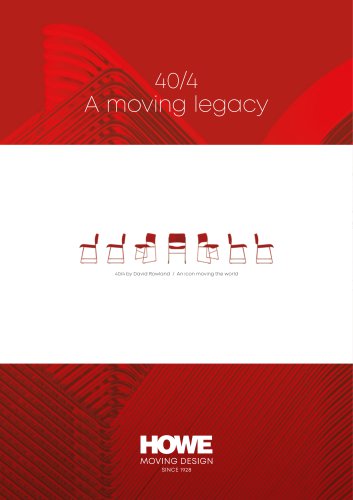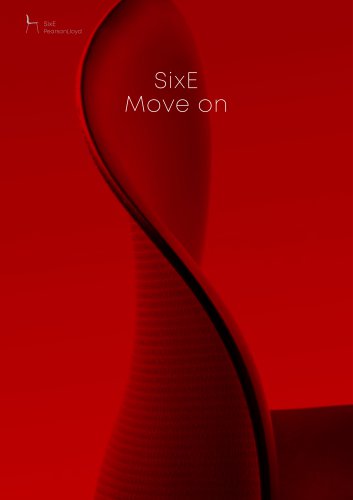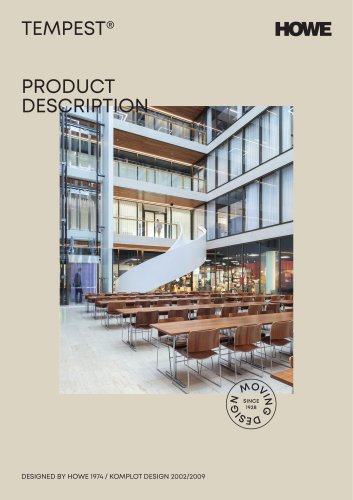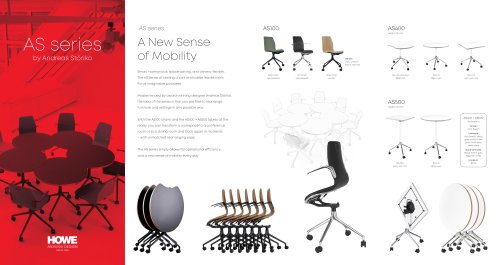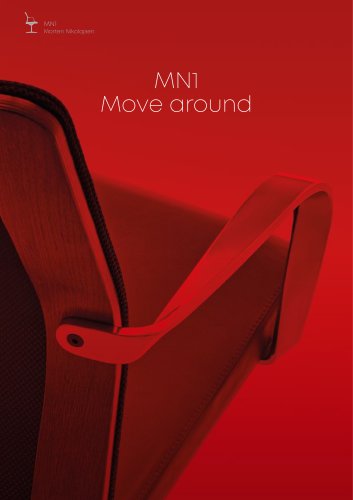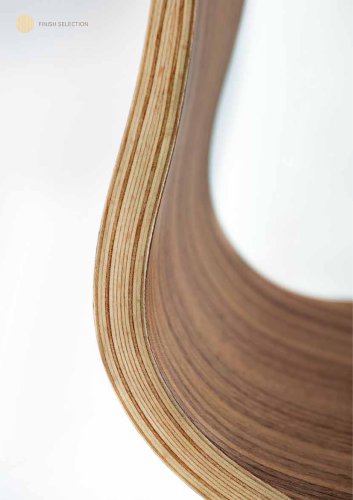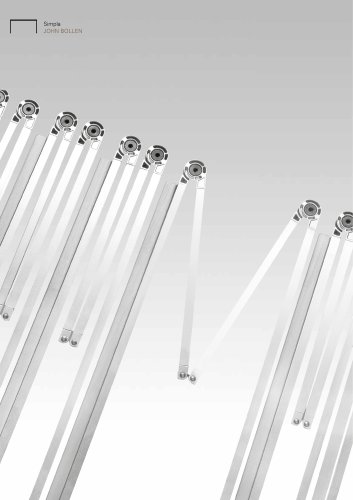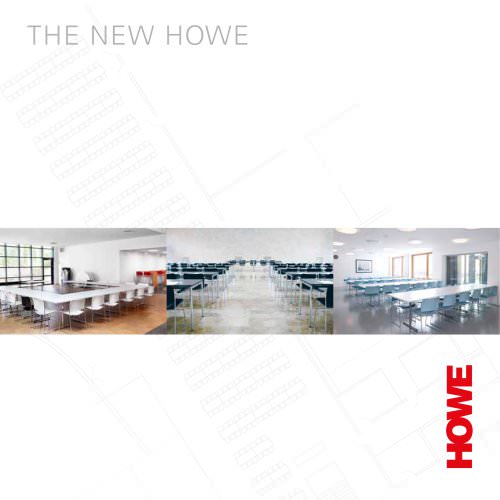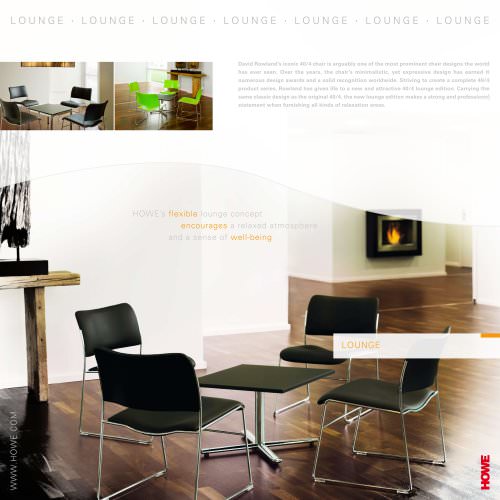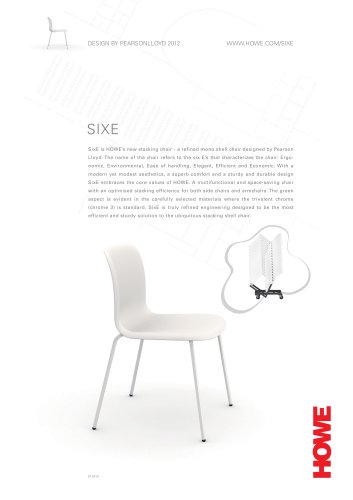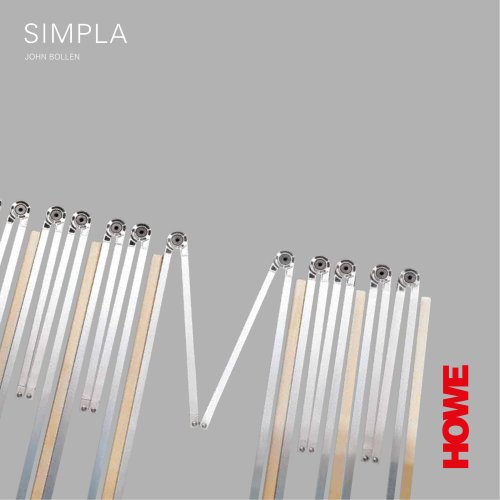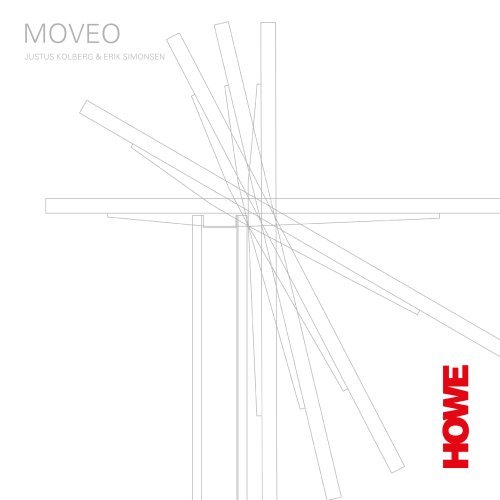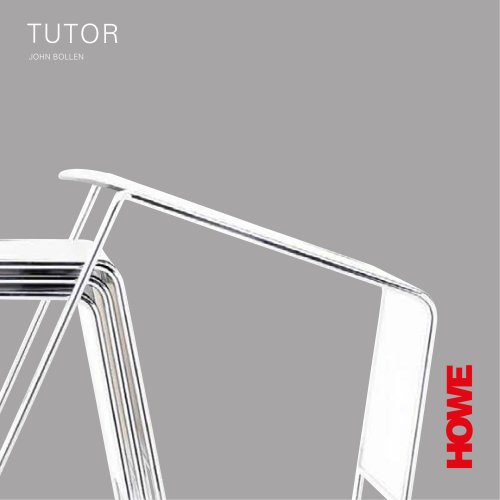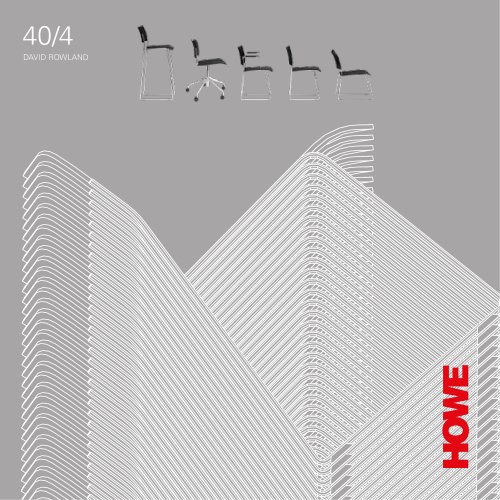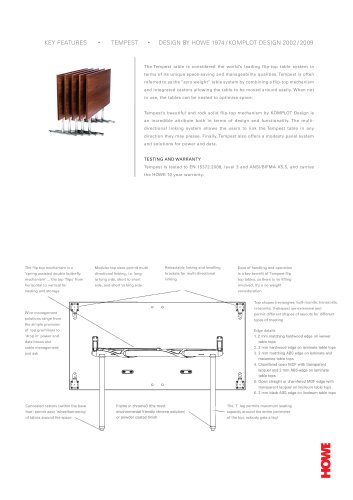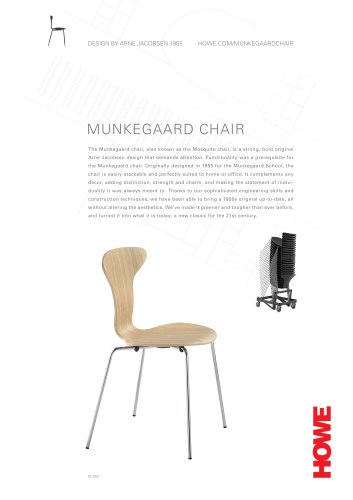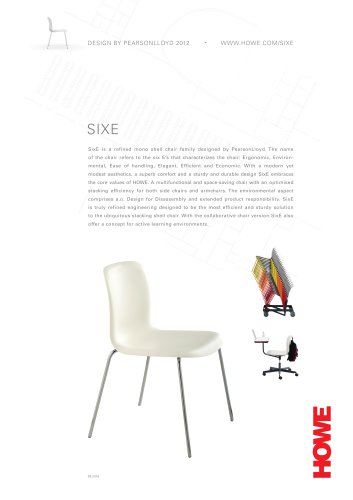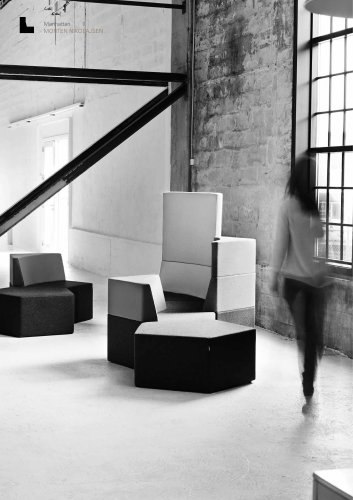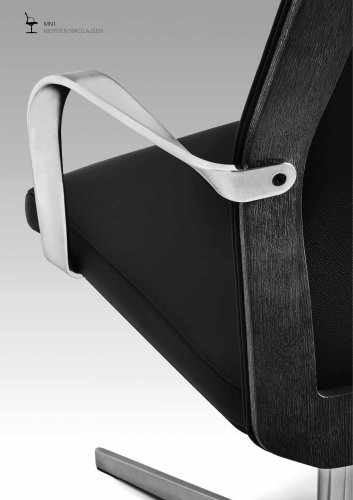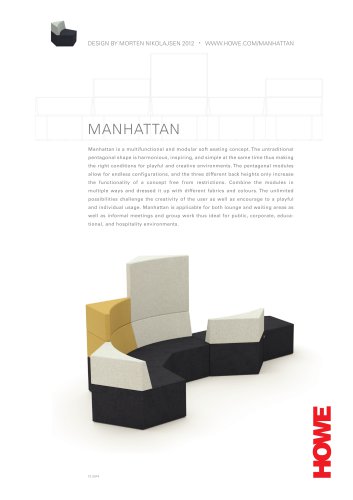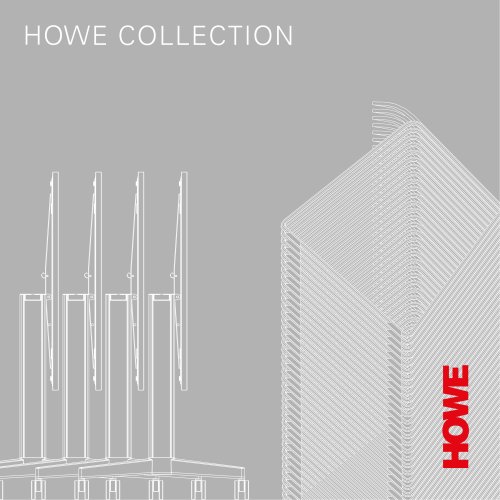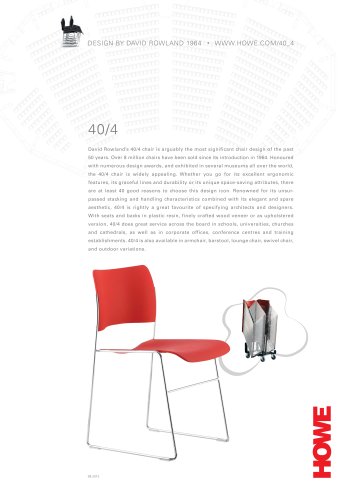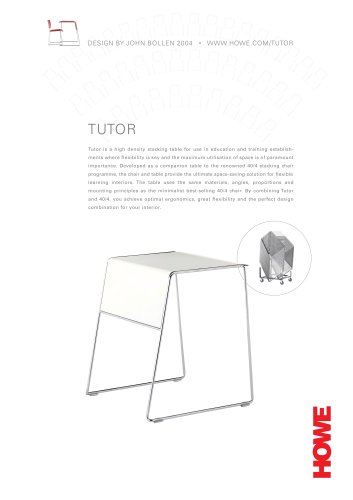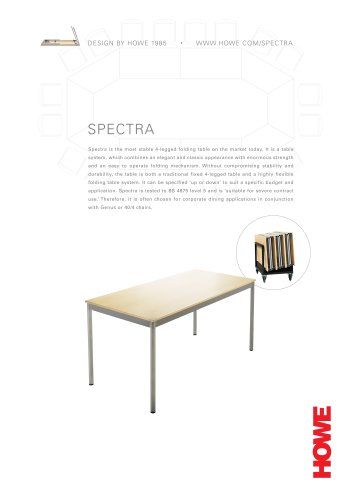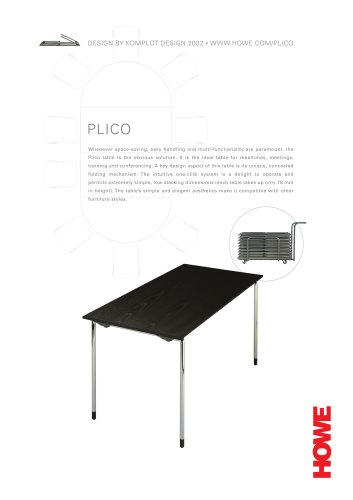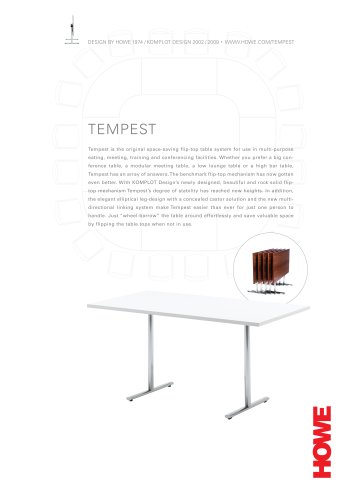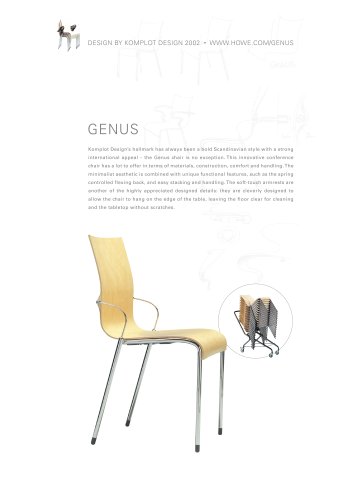
Catalog excerpts
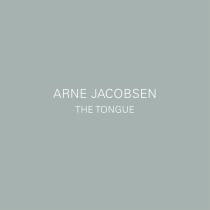
Arne Jacobsen JAcobsen the Tongue the tongue
Open the catalog to page 1
We fell truly, madly, deeply in love with this chair We admit it. We just fell in love. When the opportunity arose to take Arne Jacobsen’s Tongue chair under our wing at HOWE, we couldn’t resist. Does it sound crazy? That’s fine. We’re happy to say that we’re more than a little mad about this delightful chair.
Open the catalog to page 4
A lost classic returns You see, the cutely named Tongue is a Danish design classic that went missing. Designed right after the Ant chair in 1955, the Tongue was always one of Arne Jacobsen’s favourites but never really found a home. Now the Tongue is back.
Open the catalog to page 5
A visionary designer Arne Jacobsen (1902-1971) is one of the best known designers of the 20th century. An extraordinary man of immense vision, Arne Jacobsen occupies the pinnacle of modern Danish design. His work epitomises Danish modernism and is held permanently by museums, prized by collectors, and employed throughout the world in home, work and educational environments.
Open the catalog to page 6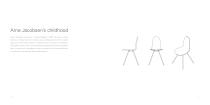
Arne Jacobsen’s childhood Arne Jacobsen was born in Copenhagen in 1902. He was an only child in a family where the father was a wholesaler and the mother was one of the first women in Denmark to be trained in banking. The family home was a true Victorian styled home which probably led a young Arne Jacobsen to paint the walls in his room white as a contrast to the lavishly decorated interior.
Open the catalog to page 7
A natural talent for painting At the age of 11 Arne Jacobsen was sent away to a boarding school. Here he met Flemming and Mogens Lassen - two brothers who also became pioneers within Danish architecture. In school Arne Jacobsen showed an enormous talent for painting and naturally he decided to become a painter. But both his father and Flemming Lassen believed he could make excellence use of his talent for painting as an architect thus urging him to prepare to study architecture. As you know, Arne Jacobsen agreed.
Open the catalog to page 9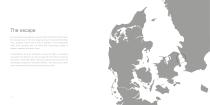
The escape Arne Jacobsen belonged to a Jewish family which meant that when the persecutions of the Jews began during the Second World War, Arne Jacobsen was forced to flee to Sweden. In late September 1943, Arne Jacobsen and his friend Poul Henningsen rowed to Sweden together with their wives. It was difficult for Arne Jacobsen to leave his office so suddenly and before his departure he also arranged for the office to continue work with a small staff. Before fleeing to Sweden Arne and his wife had started a production of printed textiles - this was to prove their most important income...
Open the catalog to page 10
Jacobsen’s most famous legacy The productivity of Arne Jacobsen in the 1950s was overwhelming. The high point of his architectural oeuvre in this period includes the Søholm houses and Munkegård School. It was also in this period Arne Jacobsen designed his famous chairs beginning with the Ant in 1952. It was later the chair designs that earned him an international reputation as a furniture designer.
Open the catalog to page 11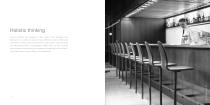
Holistic thinking As an architect and designer of rare talent, Arne Jacobsen was famous for an ability to work at many different scales at the same time. This is clearly seen in one of his most famous achievements: the SAS Royal Hotel in Copenhagen (1960). Here, he was not only the architect of the building but designed everything from the furni- ture, right down to the cutlery in the restaurant.
Open the catalog to page 12
Arne Jacobsen’s fascination “It is not one specific aspect of building that captivates me most; I am equally interested each time I am faced with a new task. - That business of relaxation, which is so terribly modern today, is all good and well, but my work interests me so much, and is so varied, that many times it seems relaxing when I go from one aspect to another” . Arne Jacobsen interviewed by Kaas Johansen, “Ærlig arkitektur er det vigtigste, Berlingske Tidende, January 20, 1959. ”
Open the catalog to page 13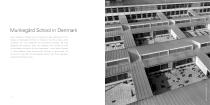
Munkegård School in Denmark Arne Jacobsen’s holistic way of thinking is also epitomised in his design of Munkegård School in Denmark. For this project, Arne Jacobsen not only designed the innovative building. He also designed the teachers’ desk, the speakers, the curtains as well as the tables and chairs for the classrooms - some chairs created in three different sizes allowing the children to grow with the furniture. It was also for Munkegård School that Arne Jacobsen designed the Tongue chair.
Open the catalog to page 14
Sculptural simplicity The Tongue chair is classic Arne Jacobsen. It has the immediately recognisable characteristics of the organic wave-form in the seat; complemented with highly sculptural, splayed legs. With a keen sense of proportion, passion for detail and the masterful use of organic lines and sculptural elements, Arne Jacobsen’s designs have achieved iconic status. The Tongue now joins this legacy of renowned Jacobsen chairs that include the Egg, Swan,
Open the catalog to page 15
The history of the Tongue The Tongue is Arne Jacobsen’s second completed chair design coming right after the Ant chair. Designed in 1955 for Munkegård School in Denmark, the Tongue was later placed in the rooms at the SAS Royal Hotel in Copenhagen, where it was also modified for use as a bar stool. Yet it wasn’t available internationally until the 1980s and even then only for a short while.
Open the catalog to page 17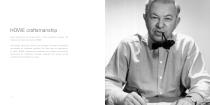
HOWE craftsmanship Now returned to its proper place in Arne Jacobsen’s legacy, the Tongue has been restored by HOWE. The design obviously wouldn’t be changed. The chair’s aesthetics are exactly as Jacobsen specified. Yet there was an opportunity to apply HOWE engineering expertise and modern construction techniques for additional strength; keeping that lovely curved sculptural form perfectly in place.
Open the catalog to page 18
The Tongue captured our hearts. We hope that our efforts help you fall for its charms too.
Open the catalog to page 20
The Tongue is manufactured by HOWE a/s, having the rights to sell and otherwise distribute the Tongue chair globally. www.howe.com Published in 2013 for HOWE a/s Text: Mark Stevens and HOWE a/s Graphics: HOWE a/s Images: Strüwing and HOWE a/s Arne Jacobsen wall paper by Boråstapeter © Copyright HOWE a/s, Denmark Stylist Gitte Kjær/photographer Anders Schønnemann,
Open the catalog to page 21All HOWE catalogs and technical brochures
-
40/4 A moving legacy
68 Pages
-
SixE Move on
33 Pages
-
TEMPEST®_2024
7 Pages
-
40_4_description_uk_0
8 Pages
-
mn100meeting_description_f
6 Pages
-
Howe Collection Flyer 2021
10 Pages
-
AS series
2 Pages
-
AS400 + AS500
5 Pages
-
Simpla Moving simplicity
13 Pages
-
Munkegaard chair A bold move
11 Pages
-
Moveo Made to move
11 Pages
-
MN1 Move around
17 Pages
-
MN table series Natural movement
15 Pages
-
Essential Workspace
2 Pages
-
FINISH SELECTION
8 Pages
-
Simpla
11 Pages
-
MN1
5 Pages
-
40/4
8 Pages
-
Munkegaard
11 Pages
-
CREDENZA 1
12 Pages
-
SPAGHETTI WALL
3 Pages
-
STRAP
2 Pages
-
HOWE in North America
11 Pages
-
SixE Brochure
10 Pages
-
Lounge
2 Pages
-
HOWE Collection 2013
36 Pages
-
40/4 David Rowland Design Book
23 Pages
-
SixE description
4 Pages
-
Skyline brochure
10 Pages
-
Usu brochure
10 Pages
-
Simpla brochure
10 Pages
-
Moveo brochure
10 Pages
-
Plico brochure
10 Pages
-
Tutor brochure
10 Pages
-
40_4 brochure
19 Pages
Archived catalogs
-
TEMPEST
1 Pages
-
2021 MUNKEGAARD CHAIR
4 Pages
-
40/4 A moving legacy
37 Pages
-
THE TONGUE
3 Pages
-
SIXE
6 Pages
-
Manhattan
11 Pages
-
MN1_2016
17 Pages
-
2014 MANHATTAN
4 Pages
-
MUNKEGAARD CHAIR
2 Pages
-
HOWE Collection 2012
23 Pages
-
USU
4 Pages
-
40_4
8 Pages
-
Tempest brochure
13 Pages
-
TUTOR
4 Pages
-
SPECTRA
5 Pages
-
PLICO
5 Pages
-
TEMPEST_2009
8 Pages
-
MOVEO
7 Pages
-
GENUS
5 Pages
-
MOTIO
5 Pages
-
Tutor features and benefits
3 Pages


